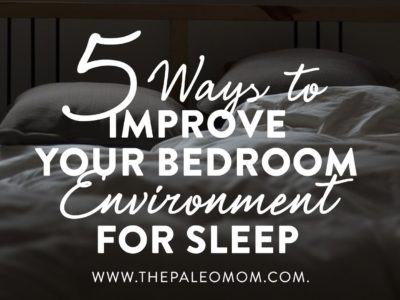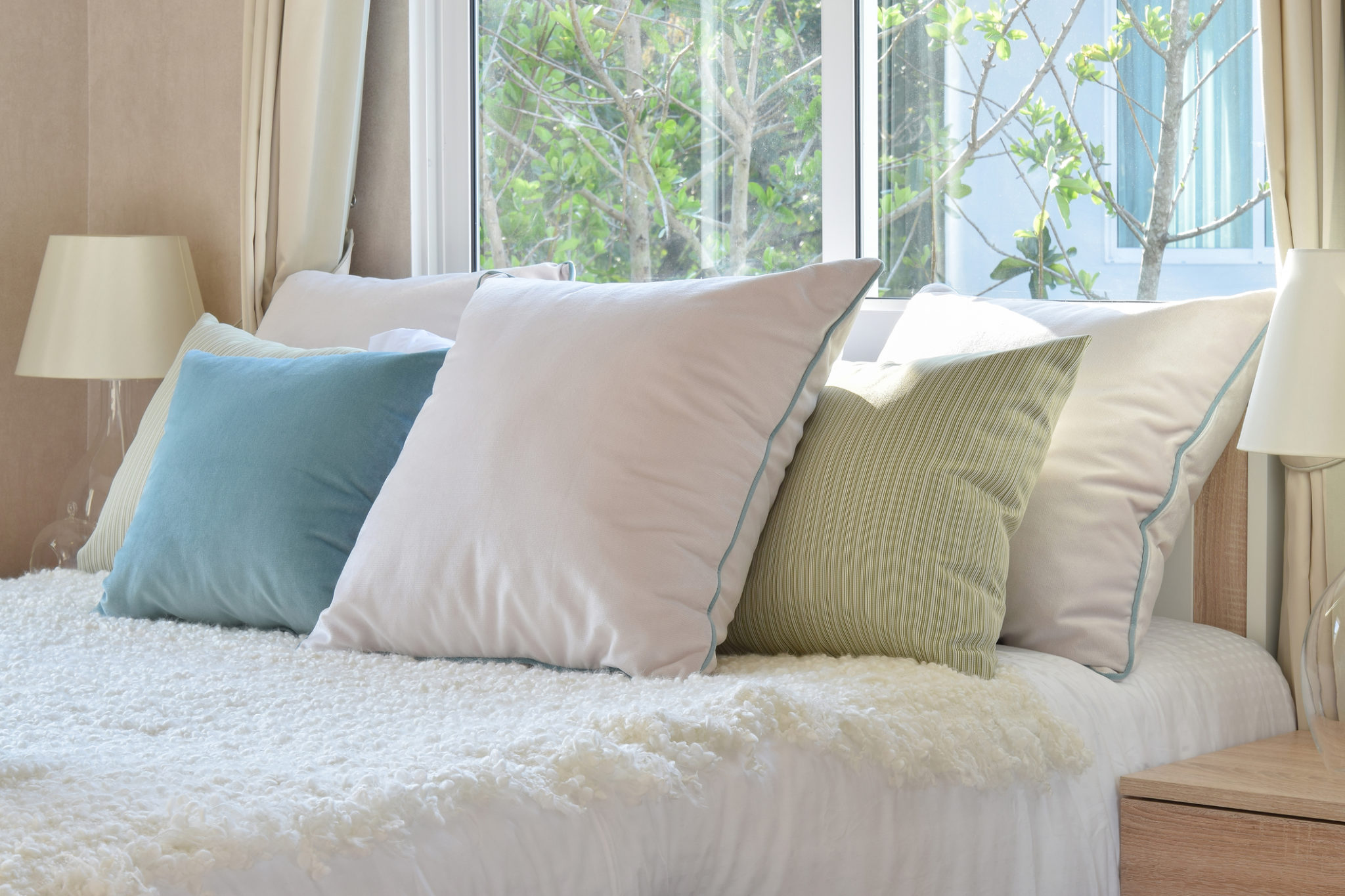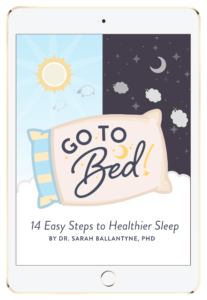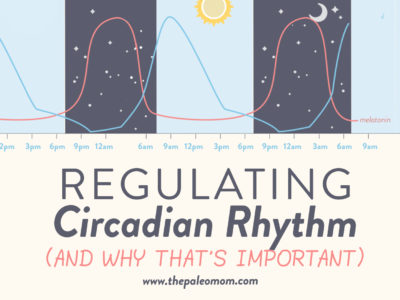There are SO many important and exciting studies coming out on sleep right now, and the reason is pretty simple: we’re finally grasping the fact that in terms of health, making sure we’re all sleeping better is one of the most important things we can do (see Sleep and Disease Risk: Scarier Than Zombies!).
We’re all familiar with some of the more common recommendations for sleep (see 4 Biohacks for Better Sleep), like using amber-tinted glasses and eliminating screen time at night. Many of those are just common sense—eating at night, for instance, stimulates our bodies and doesn’t help with sleep. But beyond the traditional biohacks, we can make lots of positive changes in our own bedrooms!
Here are a few of the environmental “knobs” you can tweak to make your sleep as stellar as possible!
1. Turn Down the Temp
Believe it or not, the temperature in which we sleep is a cue to our circadian clock (see The New Science of Sleep-Wake Cycles (and How to Improve Yours!)). There are a few contributing factors here. Firstly, our core temperature is in sync with our circadian rhythm – they actually communicate! I’m not the only one geeking out over that fun fact, right?! Our body temperature decreases during sleep, so, when our bedroom temperature is lower, it makes it easier for our body to reach its sleep temperature. This makes sleep latency (the time it takes to fall asleep) and sleep quality better. Ideally, our indoor temperature at night should be 65F or lower. Being warmer during the day than we are at night, typically above 75F, also supports circadian rhythms by saying, “it’s time to be awake!”
Save 80% Off the Foundations of Health
Expand your health knowledge on a wide range of topics relevant to you, from how to evaluate scientific studies, to therapeutic diet and lifestyle, to leaky gut and gut microbiome health, to sustainable weight loss, and much more!!!

There’s even some evidence that we should opt for a colder environment in the winter and a warmer environment in the summer (both at night and during the day). This, like the idea that we sleep longer during the winter and shorter during the summer, is gathered from studies of hunter-gatherer cultures (see How Much Sleep Do We Need? Understanding the Hunter-Gatherer Evidence). On the bright side, an indoor nighttime temperature of 60F makes for some great energy savings in the winter!
2. Opt for the Right (White) Noise
We’ve all been there: we’ve done all the right things to get ready for bed, but there’s a noise outside our window that Will. Not. Stop. Or maybe we’re working on the Go To Bed Challenge, and our new bedtime is an hour or two earlier than our family’s. Since sticking our heads under a pillow isn’t really conducive to restful sleep, I’m happy to report that a relatively inexpensive gadget can actually help solve the problem of environmental noise.
White noise generators (they sell for under $30 on Amazon) can be tremendously helpful, especially if we’re looking to mask high frequency/pitch noises in or outside of our homes. Beyond the typical intrusive noise (cars driving by with the music blaring, construction, your teenage children watching a horror film downstairs), there are plenty of sounds in frequencies we can’t hear that will continue to stimulate our brain and block sleep. That makes it hard for our brains to go into sleep mode and keeps us in a very light phase of sleep. White noise generators can help drown out trains, traffic, barking dogs, and noisy neighbors by masking them with “radio static” that your brain can easily tune out.
3. Ditch the Alarm Clock
Waking up to a jarring noise (even if it’s your favorite radio station!) is very physiologically stressful, and can impact that cortisol awakening response that helps us wake up during the day – especially if we’re hitting the “snooze” button multiple times (see Managing Stress). Think about it: if our bodies release a burst of cortisol upon our first alarm, and we’re sleeping through our body’s “wake up” signals, then we’re setting ourselves up to be tired for the rest of the day. Many of us live by that second or third alarm! But when we consider the affect on our cortisol, those extra 10 minutes probably aren’t worth it.
The best option for protecting our circadian rhythms and overall health is to sleep until our body naturally wants to wake every morning. Easier said than done, right?! In a perfect world, we’d all be well-rested enough to make that happen. But, if we still want to combat the jarring effects of a traditional alarm clock, a light alarm clock is a great investment that is considerably more soothing! Plus, it can help to even more effectively entrench our circadian rhythm (see Regulating Circadian Rhythm (and why that’s important)), especially during those darker winter months!
4. Keep It Dark
Sleeping in a completely dark room is really important for protecting circadian rhythms (see Regulating Circadian Rhythm (and why that’s important) and The New Science of Sleep-Wake Cycles (and How to Improve Yours!)). When blue wavelengths of light (a major component of sunlight) hit photoreceptors in our eyes, our brains get the message that it’s daytime. The problem is that indoor lighting also contains blue light, so having lights on in the evening or overnight (even including the LED display on your alarm clock and your phone charger beside your bed) interferes with our sleep by giving our brains the signal that it’s daytime. (Aside, indoor lighting also isn’t bright enough to completely replicate the daytime signal that the sun provides, which is why spending all day indoors also wrecks our sleep quality.) Red lightbulbs don’t have this affect on our eyes, which is why I recommend installing them in our bedrooms! Better yet, Phillips Hue Lightbulbs can change color and brightness controlled by an app in your smartphone, making them a great option if you don’t want to install several different types of lights in your room.
Of course, the best option while we’re sleeping is a perfectly dark bedroom. That may mean installing blackout curtains, especially in the summer when an early bedtime might mean more light outside. Blackout curtains can be one of the greatest biohacks for getting a good night’s sleep (especially if you are a shift worker or if you have artificial lights such as street lamps outside your bedroom windows). We may also need to cover up any LED lights on phones, toothbrushes, baby monitors, or whatever other gadgets we have plugged in in our bedroom. We don’t need to go to extreme lengths to get this done— duct or masking tape is an inexpensive solution.
5. Be Strict About What You Do in Bed
This one is tough for many of us to wrap our heads around. Even when we’ve ditched the TV before bed, we still want to be able to read in our own bedrooms. And while it’s important that we cue our bodies for sleep by taking time to wind down before bed by reading, solving a crossword, cuddling with a loved one (see The Health Benefits of Connection), doing some yoga stretches, meditating, taking a warm bath, or listening to relaxing music, ideally we wouldn’t actually do these things in the bedroom!!! If we frequently read, watch TV, surf the web, or eat in bed, our brain will begin to associate those activities with the bedroom. That means that when we lie down to go to sleep, our bodies will start revving up in anticipation of another episode of Game of Thrones or another chapter of The Hunger Games. And we all know what it’s like to promise you’ll only read one chapter of your book and get sucked into a particularly exciting part. Where did that three hours go, dystopian young adult romance novel? Yikes! Really, the only thing that should be going on in our bedrooms other than sleep is sex.
Want more great tips on improving your sleep? Check out the completely upgraded Go To Bed: 14 Easy Steps to Healthier Sleep!









